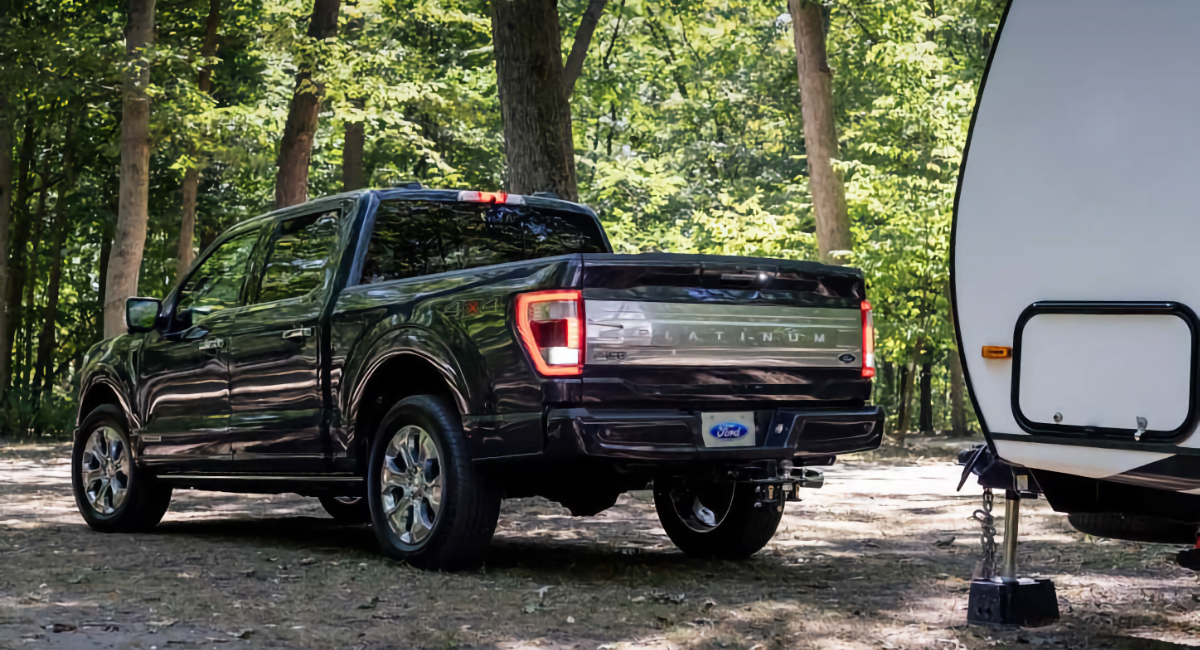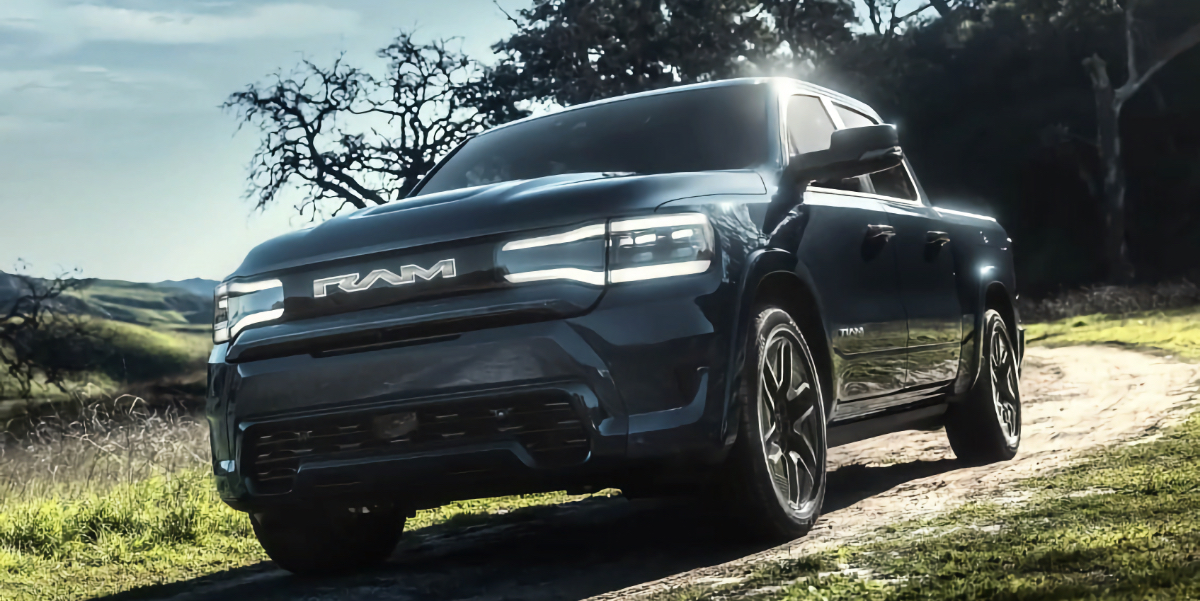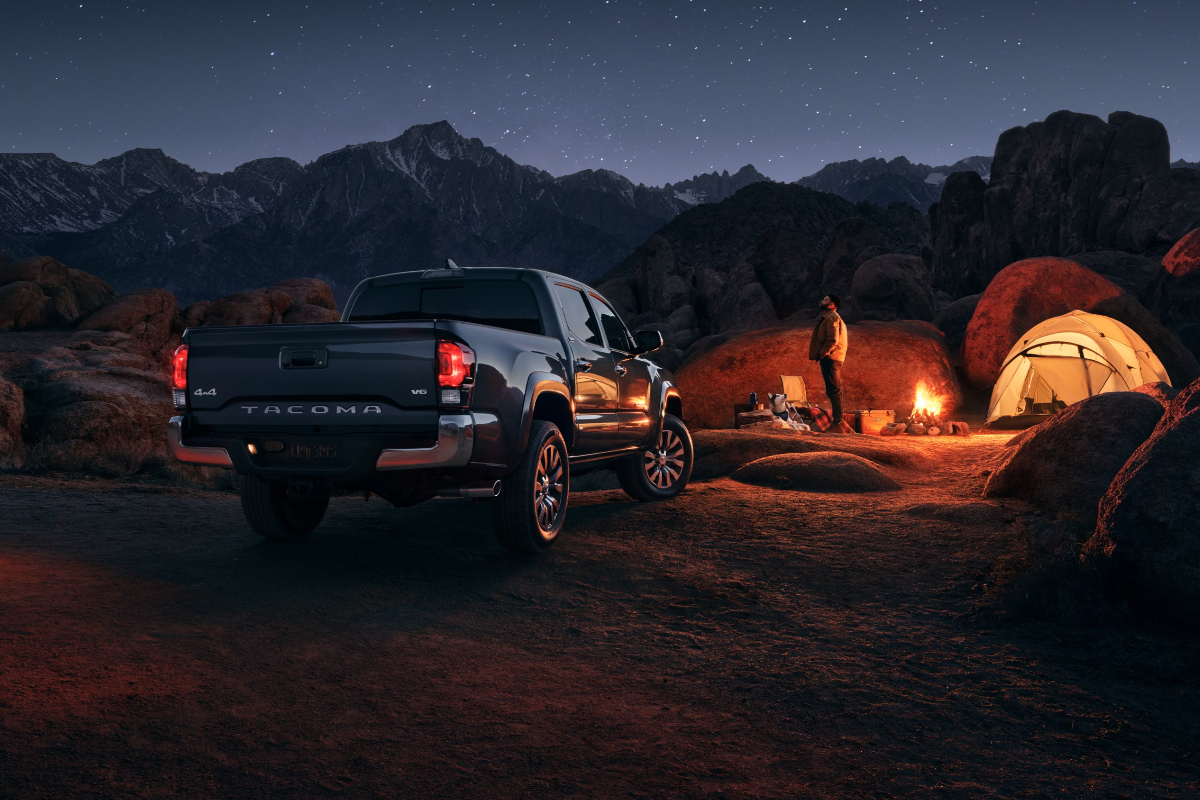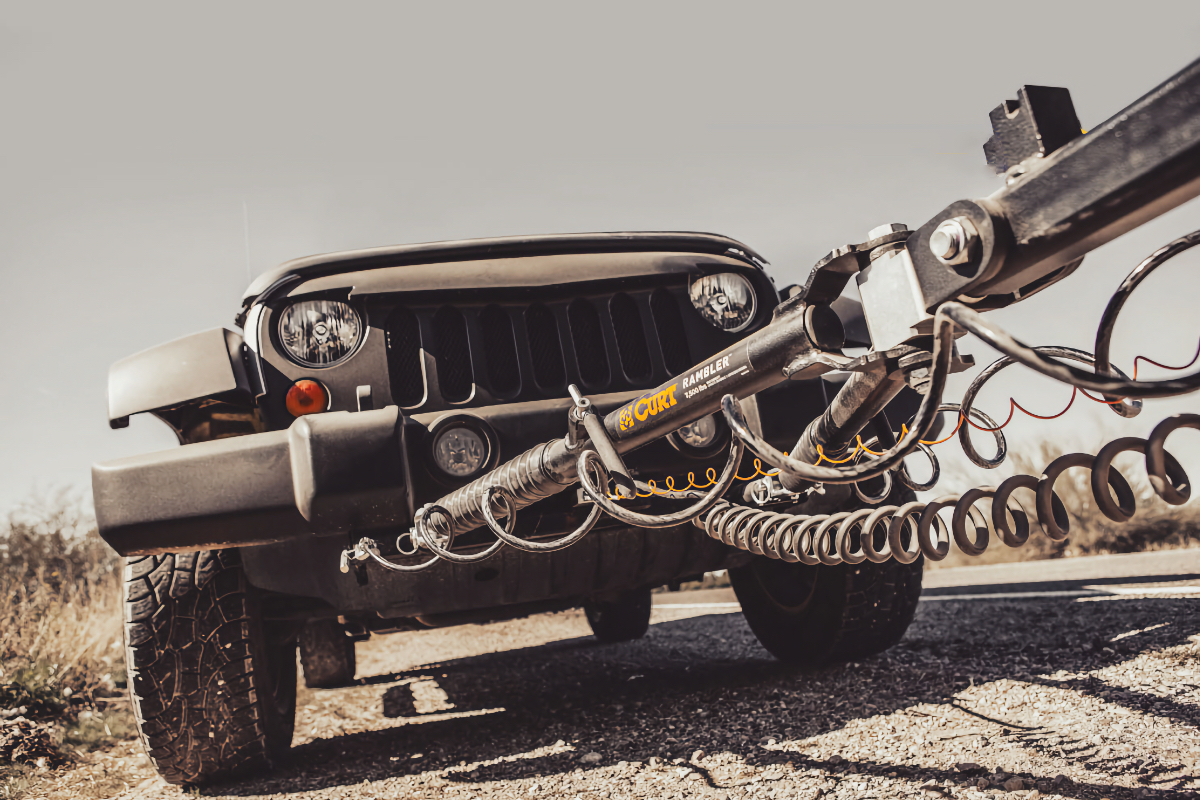Understanding RV Weight Distribution
Image Caption:
Merriam-Webster defines “weight” as the force with which a body is pulled toward the earth. Everything around us feels this gravitational pull. Then you add the forces of movement, which can magnify the effect of weight, and … well, you get the point. Weight and loading are important for an airplane so it will lift off the ground and for a ship so it won’t roll over, and they are important for your RV, not only to make sure it will last a long time without premature wear or component failure but also so it will be safe to drive on the highways and back roads.
Resources for RV weight
There are a number of resources for RVers to reference regarding the weight of their RV. Owner’s manuals usually provide weight and loading information, as do numerous websites. Over the years, this magazine has dedicated many pages to RV weight. One organization, the RV Safety and Education Foundation (RVSEF), has dedicated its existence to the issues of RV weight and loading. It’s an important topic that every RVer should understand.
The dangers of Overloading
Overloading a tow vehicle, trailer or motorhome can have a number of consequences. First is excessive wear to the various components, including brakes, bearings, universals, transmission, torque converter or clutch, and so on. Second, and more important, is safety. Overloaded tires can blow out, brakes can fade or fail, and structural components can break, which can all lead to loss of vehicle control and cause a crash. Staying within the engineering limits of your vehicle is the best way to prevent this from happening.
To comprehend vehicle weight and loading, you need to be familiar with the following weight terms. Note that these values contribute to an understanding of the proper matching of a tow vehicle and trailer, or what a vehicle itself can handle, but no one value presents the complete picture, which is a common misconception among RV owners.
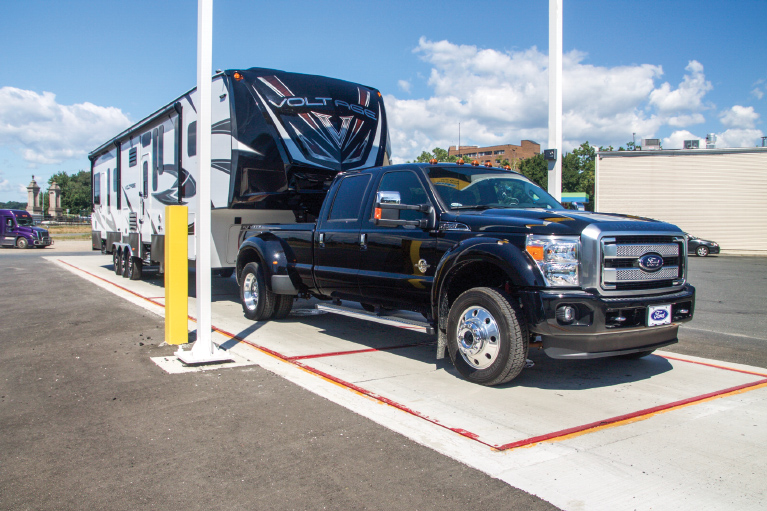
Most truck scales like this one have three platforms that will allow you to have a front-axle, a rear-axle and a trailer-axle weight.

Once you have weighed both the truck and the trailer, drop the trailer and come back to weigh just the truck. This way you can use both weighs to calculate your rough axle loads. Remember, this is a rough weigh and is not as accurate as weighing by wheel position, so it still can be possible to be overloaded on one side of an axle.
Gross Combination Weight Rating (GCWR)
This is the maximum operating weight of a tow vehicle and anything it is towing, loaded. There is nothing that can be done to increase a vehicle’s gcwr, and it must not be exceeded.
Gross Vehicle Weight Rating (GVWR)
This is the maximum operating weight of any vehicle on the road and is set by the original equipment manufacturer (OEM). All tow vehicles, towed vehicles, motorhomes and trailers have a GVWR. Likewise, there is nothing that can be done to a vehicle to increase its GVWR, and this value must not be exceeded. In contrast, changing some of a vehicle’s factory components to lighter-duty ones can reduce the GVWR; however, there is no practical way to quantify that reduction.
Gross Axle Weight Rating (GAWR)
This is the maximum amount that can be placed on any one axle of a vehicle, evenly distributed across the axle, and includes the weight of the axle. It is important to note that a vehicle may be within its limits on any other rating and still exceed its gawr. A vehicle’s GAWR may be increased by replacing the axle with a heavier rated counterpart and/or upgraded suspension components, but that will not increase the GVWR.
Unloaded Vehicle Weight (UVW)
This is the weight of the base vehicle, as shipped from the factory. For tow vehicles, this may not include options that are installed on the vehicle at the factory. For RVs, it generally will, as they are weighed and the certification label is affixed prior to shipping.
Cargo Carrying Capacity (CCC)
In the RV world, ccc is used to provide a close value to how much cargo can be put in an RV, which is especially useful at the time of the initial purchase. This number does not include any aftermarket or dealer-installed accessories or modifications. Once an RV has been loaded and modified, it must be weighed to properly revise this value.
Why you Need a Truck Scale
To truly match a tow vehicle and its towed vehicle or trailer, it is essential to weigh the vehicles and know these values as accurately as possible. The best way to weigh a vehicle is by wheel position, and the RVSEF does this for RVers all over the country. However, most RVers won’t be in the areas where this service is provided, so weighing in on a truck scale is the next best option. These can be found at truck stops, moving companies, gravel pits, some landscape-material suppliers and the occasional recycling center. Do an online search for “truck scales” and your ZIP code to find one nearby.
A truck scale will provide the vehicle’s overall weight and, if you can position the vehicle properly, the axle weights. With trailers, weighing on a truck scale can also determine pin or hitch weight and axle weight.
Truck scales generally consist of three platform sections that conform to the axle positions for tractor-trailers, but this setup also works for RVs. To get the most complete picture, pull your vehicle’s front axle up to the front platform. There is often an intercom outside the driver’s-side window that is used to communicate with the scale operator.
Take a look back at which axles are on which platforms. The weight report will show each platform as a separate axle, so if you want to adjust your RV on the scale, do so before hitting the intercom button. You’ll have to physically move the tow vehicle or RV on and off the scale to ascertain axle weights for scales without the above configuration.
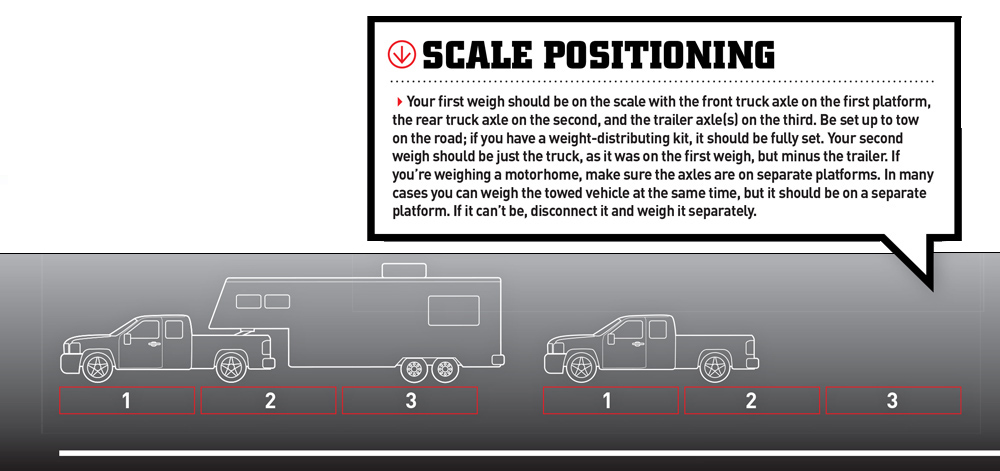
If you’re weighing a truck and trailer on a three-platform system, you will want the front axle on the first platform and the rear axle on the second platform, as shown above. The trailer axles should be on the third platform. If you’re weighing a motorhome, you’ll want the same; the trailer or towed dinghy should be on the third platform.
How to get the right weights from a truck scale
This first weight will give the gross combined weight and weight by some axle positions, depending on where the axles fall on the scale. If you’re towing a trailer and want to know gross weight, you’ll have to do a second weighing.
The first weight on the report will provide:
• The weight of the truck and trailer.
• The truck’s front and rear axle weights. This will show the operating weight of the truck axles. The weighing should be done with weight-distributing equipment in place when weighing a travel trailer.
• The trailer’s axle weight.
After you have the first weight, tell the operator you’ll need a second weight for the trailer. The operator may ask for the company and the truck and/or trailer number, so have something in mind ahead of time. This is to identify you and your equipment at the fuel desk. You can also just say something like “Private vehicle, Ford F-450 and Dutchmen Voltage,” for example, or simply “Truck and RV.”
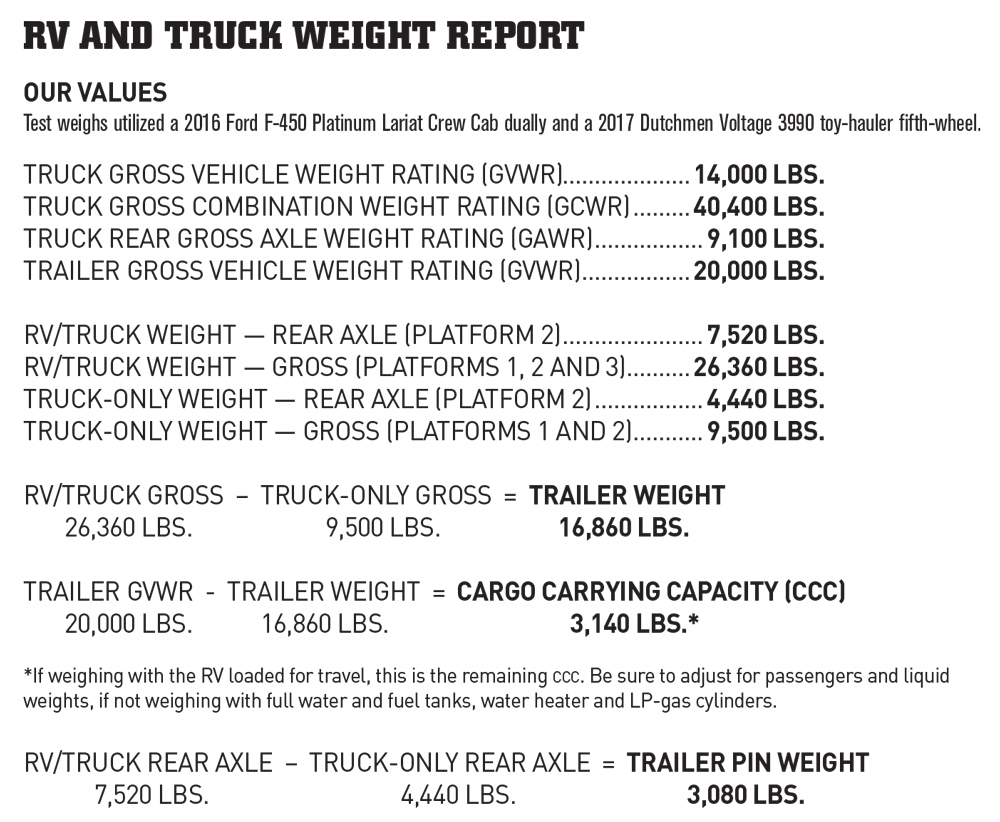
The second weight will provide:
• The truck’s actual weight and individual axle weights without the trailer but otherwise loaded for travel.
With these values in hand, you can extrapolate:
• The hitch or pin weight of the trailer or fifth-wheel. Subtract the truck weight without the trailer total from the truck-with-trailer weight. The difference is the operating hitch or pin weight (with the weight-distributing system in place for travel trailers). For fifth-wheel trailers, it will be the actual pin weight.
• The rear-axle weight of the truck, to determine if it is overloaded.
• The front-axle weight, to deter- mine if too much weight is on the rear of the tow vehicle. With a travel trailer, this may mean tightening or releasing the weight-distributing spring bars a bit.
Weigh without the Trailer
Since you have the weight of the truck and trailer together, mathematics allow you to extrapolate the fifth-wheel pin weight or trailer hitch weight by weighing the truck alone without the trailer. Drive off the scale and drop the trailer in an appropriate parking spot, and go back to the scale for the second weight.
Once the truck is on the scale, push the intercom and tell the operator that this is your second weight. This will give you the truck-only weight. Once the operator confirms the weight is recorded, go back and reconnect the truck and trailer, and proceed to the fuel desk to get your weight report.
Helpful Tips
Remember, the trailer and tow vehicle should be loaded for travel. Fuel and water tanks, and LP-gas cylinders should be completely full. If it’s not possible to weigh with the water tank full, water can be estimated by calculating 8.33 pounds per gallon. The water heater should be included and the appropriate weight added. The reason for weighing with full water is because the location of the tank in the trailer can dramatically affect the pin or hitch weight. Many RVers travel with empty holding tanks and, again, the weight of full tanks can be extrapolated later.
What the scale will tell you:
• The gross combination weight. If you didn’t weigh fully loaded for travel, be sure to add those values later.
• The tow vehicle’s, trailer’s or motorhome’s actual weight, as equipped and loaded for travel.
• The trailer pin or hitch weight and the axle weight. If the trailer is towed level, and it should be, the axle weight should be divided between the two axles.
You will also be able to extrapolate the loaded rear-axle weight for the tow vehicle while towing the trailer by taking the rear-axle weight of the truck alone and adding the pin or hitch weight of the trailer. Remember that, to be accurate, the tow vehicle should be loaded for a typical trip, including passengers and cargo in the truck bed.
If any of the ratings are exceeded, it will be necessary to adjust the weight, if possible. This can be done by reducing cargo or shifting its placement until the weight-rating values are met. It’s best to refrain from using any vehicle or RV before the weight is within its limits.
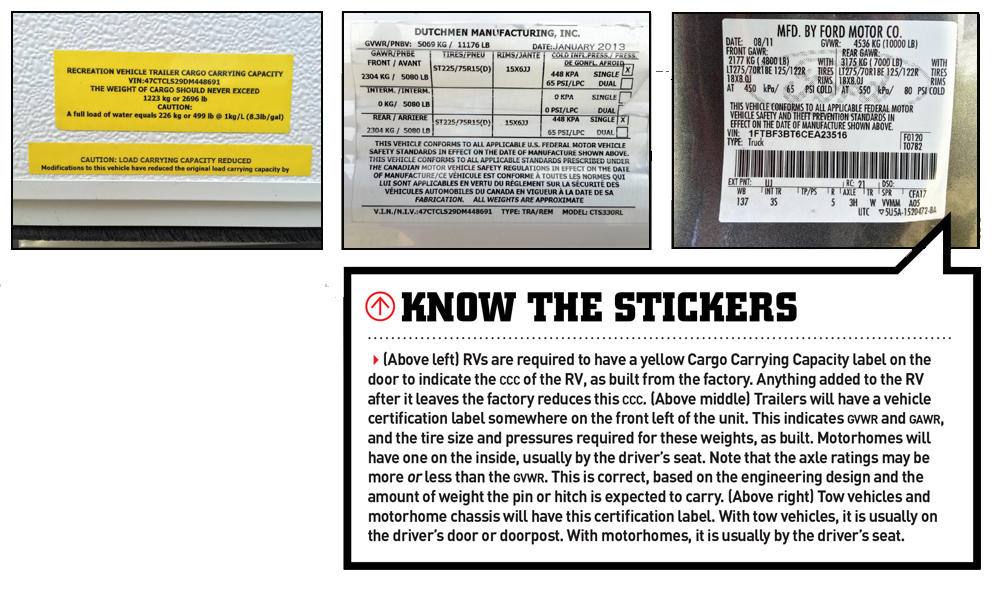
Consider Weight in RV Modifications
Over many years of weighing RVs, the RVSEF has seen some common mistakes and oversights that RVers make with respect to weight, according to Walter Cannon, the organization’s executive director. “Besides not getting weighed, there are a number of issues the RV manufacturers get blamed for that really happen after the RV is down the road,” Cannon said.
“I’ve weighed vehicles that the owners say they haven’t done anything to, when that’s not the case, and it throws the weights way off,” he added. “We had one recently, and it turned out that he had had a liquid-type roof coating done at a rally, which adds somewhere around 300 pounds, and he had the dinette replaced with a custom-built desk with file drawers and a granite top.”
It’s important to note that anything added to an RV increases weight, but some additions are easy to overlook. Many RVs come prepped for things like satellite dishes, second air conditioners and washer/dryers, all of which add considerable weight. Any aftermarket accessory adds weight — some small, like plastic vent covers, and some large, like solar panels and battery banks. Then there are the giant ones like motorcycle and golf-cart lifts that are mounted on the rear of RVs.
Cannon noted that RVers can get into trouble not only with add-ons but also with toy haulers. “People buy toy haulers and think they can fill the back with anything. We’ve seen two household refrigerators, full beds for additional people, horse stalls — anything else they can fit back there,” he said.
Weighing by wheel position is important, Cannon stressed. “While an RV may be within its gawr for a particular axle, we have seen where one wheel position may be way overloaded.” When an axle is loaded close to its rating, the wheels should be weighed individually to determine if there is an overloaded position.
We all want our RV experiences to be safe, enjoyable and as economical as possible. Paying attention to weight limits at the beginning of a trip and making sure you don’t pick up too much weight while on the road will go a long way toward that goal.
Recreation Vehicle Safety and Education Foundation
For RV weighing locations and dates, and detailed information on RV safety, visit the RVSEF website.
www.rvsafety.com

